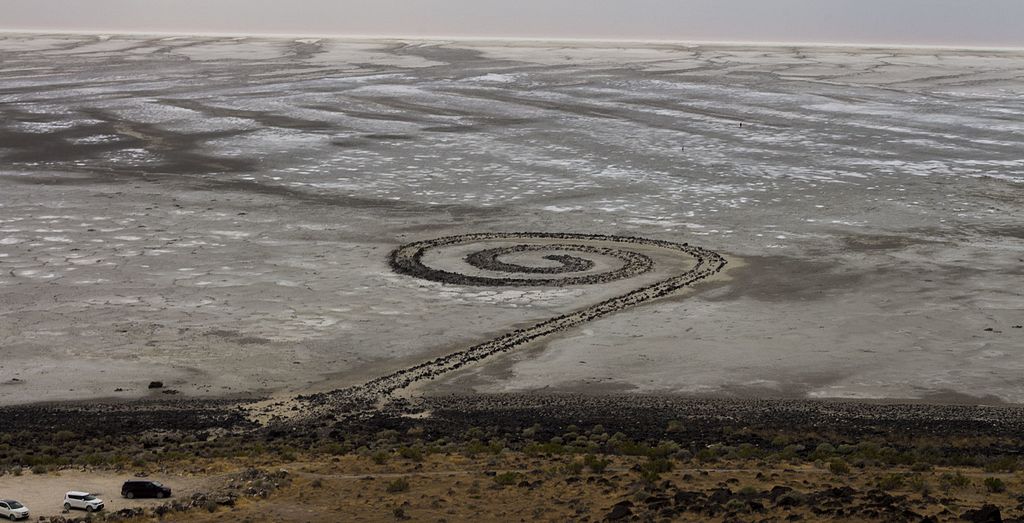In London, scientists, artists and activists surge to save the Humans
Published 21 November 2018 by Rob La Frenais
On the eve of COP24 in Poland, the alarming implications of the latest IPCC report “Global Warming of 1.5 C” recall the role of artists in thinking long-term about the future of the human species on this planet, alongside a new surge of scientist-led activism.
London, special envoy
In an interesting experiment by social scientists called the “bystander effect”, volunteer subjects are placed in a closed room and told not to leave the room under any circumstance. Then the room is filled with smoke. Unknown to the subjects, also planted in the room are “confederates”, actors who are briefed to stay where they are regardless and not panic. Researchers found that the subjects stayed where they were despite the risk of fire, although in a control group with no “confederates”, the subjects left the room. Some climate scientists find this experiment to be an interesting parallel to the current climate emergency: nobody is running from the room to put out the fire.
The 1.5 degrees target was first set at COP15 in Copenhagen, which stalled at such an ambitious target, only to be replaced by far more modest targets set at COP21 in Paris in 2015. Now it’s back. In the IPCC report simply entitled “Global Warming of 1.5 C”, released in October 2018 and compiled by 91 scientists from 40 countries, the bombshell is dropped: unless we keep to the original 1.5 degrees, the planet will probably be uninhabitable by humans within the lifetime of our grandchildren. The problem with the IPCC reports is that they are very difficult to untangle from the “consensus” demanded by funders. But this one pulls no punches. It is clear that we have to decarbonize now, not tomorrow.
In the face of this, Donald Trump, Jair Bolsonaro and others are ripping up even the modest Paris Agreement. The climate emergency is here, now, and we are still in denial about it. Scientists are meeting again at COP24 in December 2018, and the new climate emergency will likely be on the agenda.

Art for the long-term
Despite the likelihood that the Earth is rapidly becoming uninhabitable for humans, many artists have been creating deep time projects that go well beyond their lifetime. We could start with Time Capsule 1 at the Chicago World Fair in 1939. Among objects such as a slide rule, toys and a telephone, was a message from Thomas Mann: “We know now that the idea of the future as a ‘better world’ was a fallacy of the doctrine of progress. The hopes we center on you, citizens of the future, are in no way exaggerated. In broad outline, you will actually resemble us very much, as we resemble those who lived a thousand, or five thousand years ago. Among you too the spirit will fare badly…”
Artist Joseph Beuys’s first response to early awareness of the climate emergency was 7000 Oaks. Started in the early 1980s, each oak tree has an accompanying basalt column, said to act as a symbol for countering human extinction. It continues to be maintained by the city of Kassel and has been continued in cities such as Baltimore in the U.S. Before going on to famously say that every living being is an artist (a universally misinterpreted statement), Beuys said: “Here my idea is to declare that art is the only possibility for evolution, the only possibility to change the situation in the world.”
Lola Perrin of ClimateKeys agrees. She is mobilizing an international phalanx of classical and European contemporary musicians, some of whom will play at COP24, to alert the world about the climate emergency in a project called The Big Invisible Clock. Perrin says: “At ClimateKeys, we believe solutions to global warming should be at the heart of all human activity. Music can engage diverse communities who wouldn’t otherwise be involved in climate work. Our events provide platforms for sharing expertise and forming emotional connections, motivating human action… creating a domino effect that helps facilitate transition toward Paris Agreement implementation.”
A forest has been created by Katie Paterson in Future Library. In 2014, the artist planted 1000 trees outside Oslo in Norway, which in 100 years will be fully grown and will then provide the paper for 100 books, commissioned once a year. Paterson is well known for her “moonbounce” work Earth-Moon-Earth, which bounced Beethoven’s Moonlight Sonata off the moon in a DIY radio transmission.
Future Library, by Katie Paterson:
Four books have been commissioned, by Margaret Atwood, David Mitchell, Icelandic writer Sjón and Elif Safak. Each book is delivered in a ceremony during spring of each year. The catch is that no-one will get to read the book during the writer’s lifetime. A library will be constructed from the wood felled to clear the land for the Future Library trees. “It’s a work of art that breathes and grows,” says Paterson, “and which invites us care for the planet while imagining future generations—an exquisite corpse of texts which assumes that in a hundred years, both books and forests will continue to exist.”
What if they don’t? “Of course, this is based on knowns, which we can try to predict and protect,” she replies. “From 2020, the author’s manuscripts will be held in a special room on the 5th floor of the new library—high up, in case of flooding from the fjord. In terms of the forest, there could be drought, forest fires, decline of insects and wildlife.” Paterson is often asked if she believes books will be around in 100 years. “The larger issue for us is whether or not those trees will be around. Our foresters are working to protect them. Each of the 1000 trees is digitized on a computer system. We can locate any one that dies. The trees are planted in such a way that they will self-seed. Assuming the forest survives the next 95 years, there is infrastructure in place to cut the trees and print the books.”
There are a number of other “long” artworks that are designed to last thousands of years: John Cage’s As Slow As Possible, Jem Finer’s Longplayer and, of course, the Clock of the Long Now. There are also major earthworks which would last longer than humans, notably James Turrell’s Roden Crater and Robert Smithson’s Spiral Jetty, which is already being affected by global warming and is changing day by day, year by year.

Data-driven rebellion
But maybe the most effective art is activism. The new radical non-violent movement Extinction Rebellion have pledged to undertake immediate non-violent action against governments and the fossil-fuel industry. They made headlines by occupying Greenpeace headquarters, demanding that they “up their game”. This month they blocked five of London’s bridges and intend to continue with actions that will inevitably get them arrested.
Extinction Rebellion is mainly led by disaffected scientists as a data-driven rebellion based on established principles of non-violent direct action. They have actually worked out scientifically that 25 arrests get the same amount of media coverage as 250,000 people marching. According to molecular physicist Dr. Gail Bradbrook: “Children alive today in the UK will face unimaginable horrors as a result of floods, wildfires, extreme weather, crop failures and the inevitable breakdown of society when the pressures are so great. Our experience is that, when the truth is told about climate change, it’s very hard for people to hear the latest data and the scientists who are breaking rank to speak out…”


Another voice behind Extinction Rebellion is academic and Rising Up activist Roger Hallam. “We will go to London and block transport and government infrastructure. We will be arrested. Once released, we will do it again. After years of denial, we finally have to accept the terrible truth—those in authority are going to kill us—the infliction of unimaginable suffering on billions of innocent people. This is what is planned—openly and willfully. There is no greater crime. So the time for facts and figures is over, the talks that lead to more talks. We are adults and no longer children.” At the next COP24 in Poland in December, Extinction Rebellion and non-violent resistance will almost certainly be on the agenda.
More on Extinction Rebellion.
